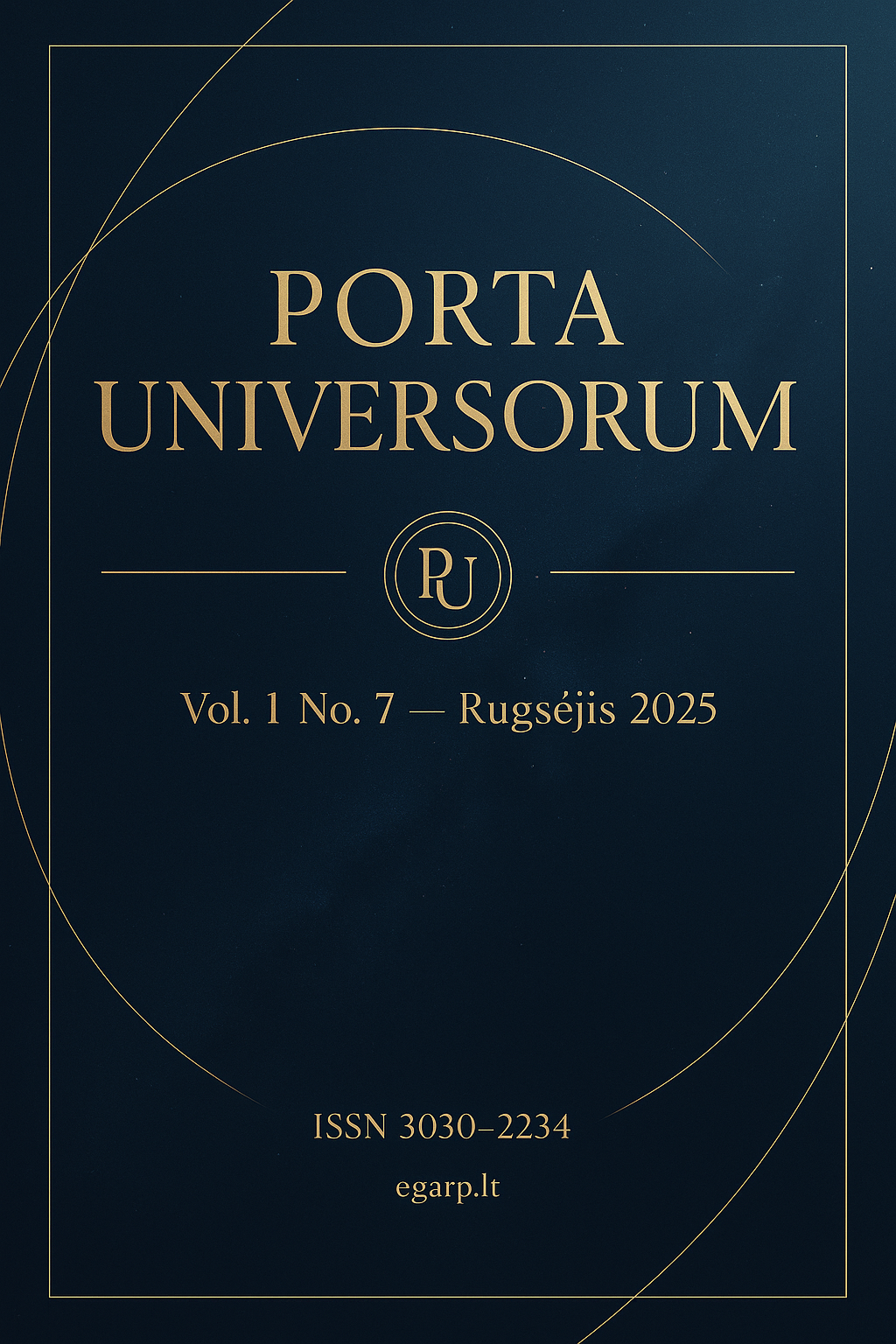Key Issues Faced in Literary Translation: Fidelity, Form, and Voice
##semicolon##
https://doi.org/10.69760/portuni.0107012##semicolon##
Azerbaijani–English poetry##common.commaListSeparator## national color##common.commaListSeparator## ghazal##common.commaListSeparator## culture-specific items (CSIs)##common.commaListSeparator## foreignization##common.commaListSeparator## domestication##common.commaListSeparator## prosody and form##common.commaListSeparator## creative compensationSantrauka
Literary translation often struggles to preserve “national color”—the constellation of form, imagery, culture-specific items, and stylistic cues that root a text in its source culture. Focusing on Azerbaijani→English poetry (with the ghazal as a test case) and contrasting direct versus mediated translations, this study operationalizes national color across five dimensions—prosody/form, lexicon/register, imagery/tropes, culture-specific items (CSIs), and syntax/voice—and evaluates strategy choices (retention, calque, gloss/paratext, explicitation, cultural substitution, omission, creative compensation). Comparative analyses show that direct translations better preserve prosodic patterning and emblematic imagery, while mediated versions exhibit higher rates of CSI substitution and omission. When strict metrical or rhyme features cannot be carried over, targeted creative compensation (e.g., internal echo, alliteration) combined with light paratext (concise footnotes or endnotes) sustains cultural intelligibility without sacrificing readability. The article proposes a practical decision flow for calibrating foreignization and domestication by passage function and reader familiarity, and offers editor-facing guidelines for standardizing transliteration and paratext policy. The findings suggest that a dimension-by-dimension approach to strategy selection yields more faithful and aesthetically effective outcomes than uniform domestication, providing a portable framework for future studies and for professional practice in Azerbaijani–English literary translation.
##submission.citations##
Abasquliyev, T. (1971). İngilis ismi feillərinin bəzi üslubi xüsusiyyətləri və onların Azərbaycan dilinə tərcüməsi [Some stylistic features of English deverbal nouns and their translation into Azerbaijani]. Bakı: Elm.
Aixelá, J. F. (1996). Culture-specific items in translation. In R. Álvarez & M. C.-A. Vidal (Eds.), Translation, power, subversion (pp. 52–78). Multilingual Matters.
Bassnett, S. (2002). Translation studies (3rd ed.). Routledge.
Berman, A. (2000). Translation and the trials of the foreign (L. Venuti, Trans.). In L. Venuti (Ed.), The translation studies reader (pp. 284–297). Routledge.
Catford, J. C. (1965). A linguistic theory of translation. Oxford University Press.
Cousins, A. D., & Howarth, P. (Eds.). (2011). The Cambridge companion to the sonnet. Cambridge University Press.
Even-Zohar, I. (1990). Polysystem studies. Poetics Today, 11(1), 9–26.
Hervey, S., & Higgins, I. (2002). Thinking translation: A course in translation method (2nd ed.). Routledge.
Həsənəli, İ. (1974, September 16). Nəsimi ingilis aliminin tədqiqində [Nasimi in the study of an English scholar]. Bakı qəzeti.
Həsənova, A. (1989). “Kitabi-Dədə Qorqud” ingilis tədqiqatında [The Book of Dede Korkut in English scholarship]. Kitablar aləmində, (1).
Hüseynov, X. M. (1983). Nizaminin ingilis əlaqələri [Nizami’s English connections]. Elm və həyat, (6).
İbrahimov, M. (1990). Tərcümə sənəti [The art of translation]—Məqalələr məcmuəsinə müqəddimə [Preface to a collection of essays] (pp. 5–11). Bakı: Elm.
İsaxanlı, H. (2005). Poetik tərcümə: Məhdud çərçivə içində xoş ahəng və gözəllik axtarışı [Poetic translation: Seeking harmony and beauty within constraints]. Bakı: Xəzər Universiteti Nəşriyyatı.
Jakobson, R. (1959). On linguistic aspects of translation. In R. A. Brower (Ed.), On translation (pp. 232–239). Harvard University Press.
Lefevere, A. (1992). Translation, rewriting, and the manipulation of literary fame. Routledge.
Newmark, P. (1988). A textbook of translation. Prentice Hall.
Nida, E. A. (1964). Toward a science of translating. Brill.
Rza, Ə. (1967, May 13). Milli kolorit [National color]. Ədəbiyyat və incəsənət qəzeti.
Spiller, M. R. G. (1992). The development of the sonnet: An introduction. Routledge.
Toury, G. (1995). Descriptive translation studies and beyond. John Benjamins.
Venuti, L. (1995/2012). The translator’s invisibility: A history of translation (2nd ed.). Routledge.
Vendler, H. (1997). The art of Shakespeare’s sonnets. Harvard University Press.
Xəlilli, Ş. (2002). Azərbaycan-ingilis ədəbi əlaqələri [Azerbaijani–English literary relations]. Bakı.
##submission.downloads##
Publikuota
Numeris
Skyrius
##submission.license##
##submission.copyrightStatement##
##submission.license.cc.by-nc4.footer##License Terms
All articles published in Porta Universorum are licensed under the Creative Commons Attribution–NonCommercial 4.0 International License (CC BY-NC 4.0). This license permits:
-
Sharing (copying and redistributing the material in any medium or format),
-
Adapting (remixing, transforming, and building upon the material),
-
for non-commercial purposes only,
-
with proper attribution to the original author(s) and source.
Commercial use of the material is not permitted without prior written permission from the publisher.




